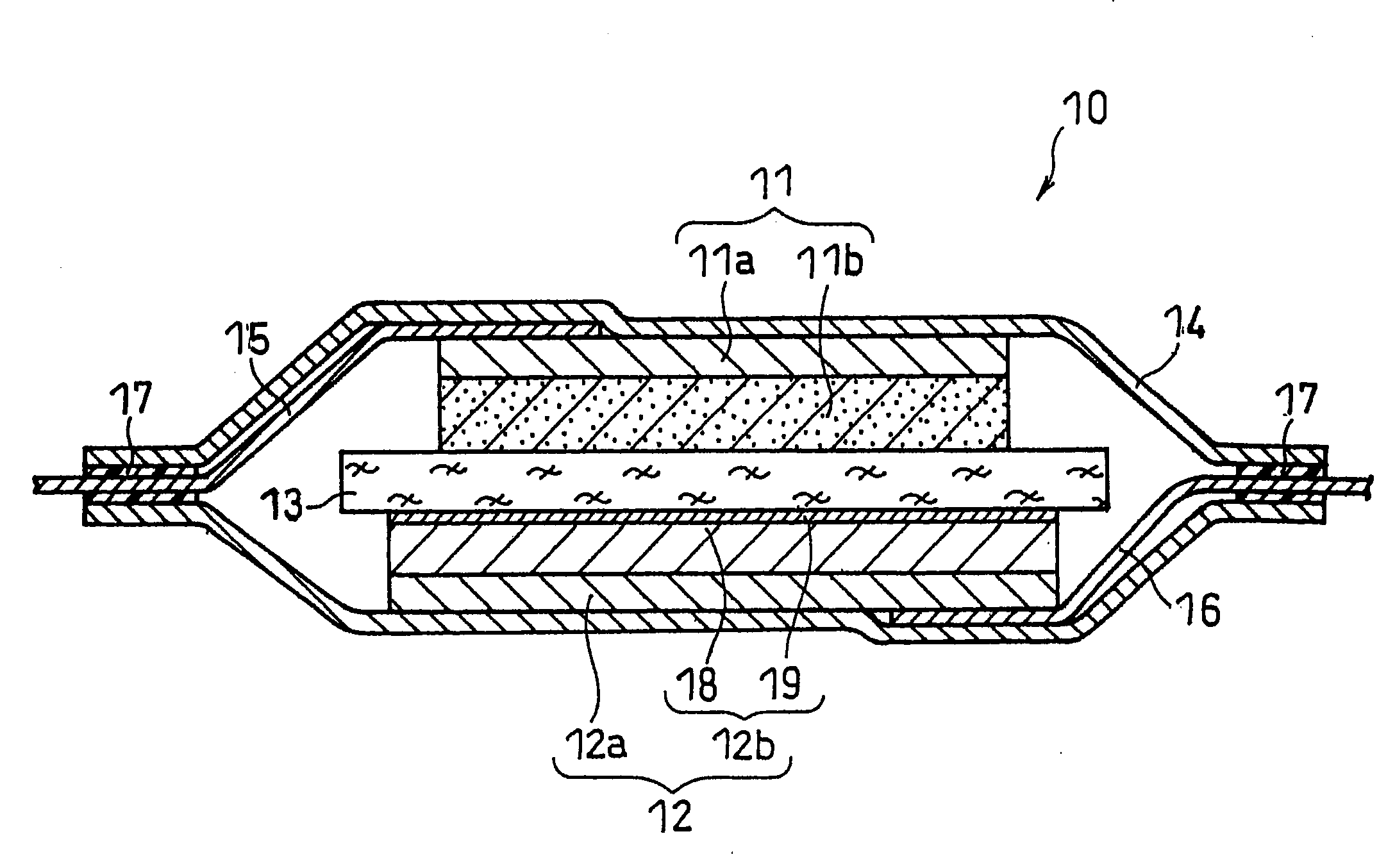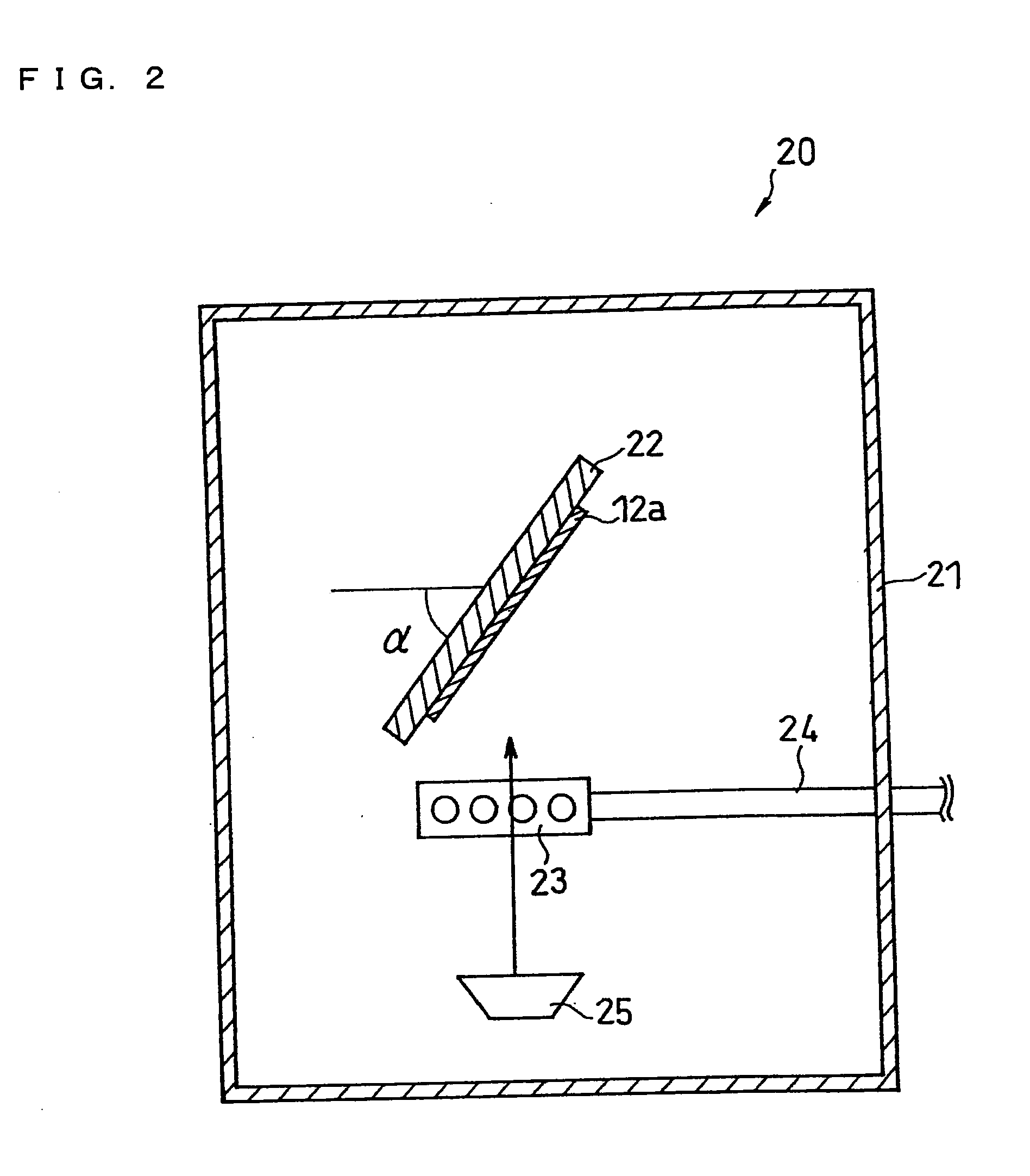Lithium secondary battery
- Summary
- Abstract
- Description
- Claims
- Application Information
AI Technical Summary
Benefits of technology
Problems solved by technology
Method used
Image
Examples
example 1
[0140]A lithium secondary battery as illustrated in FIG. 1 was produced.
(i) Preparation of Positive Electrode
[0141]A positive electrode mixture paste was prepared by sufficiently mixing 10 g of lithium nickelate (LiNiO2) powder with a mean particle size of 5 μm, serving as the positive electrode active material, 0.4 g of acetylene black, serving as the conductive agent, 0.3 g of polyvinylidene fluoride, serving as the binder, and a suitable amount of N-methyl-2-pyrrolidone (NMP).
[0142]The paste was applied onto one face of a 15-μm thick positive electrode current collector made of aluminum foil, dried and rolled to form a positive electrode active material layer. The positive electrode sheet thus obtained was cut to a predetermined shape to obtain a positive electrode. The positive electrode active material layer carried on one face of the current collector had a thickness of 60 μm and a size of 30 mm×30 mm. One end of an aluminum positive electrode lead was connected to the face of...
example 2
[0151]A battery of Example 2 was produced in the same manner as in Example 1, except that a second portion (surface layer) comprising carbon was formed by using a carbon deposition device (VC-100 available from Vacuum Device Inc.).
[0152]Specifically, a current collector with a SiO0.5 layer formed thereon was placed in the vacuum chamber of the carbon deposition device. A mechanical pencil lead with a diameter of 0.5 mm was placed so that it faced the SiO0.5 layer of the current collector. By passing a current until the mechanical pencil lead was burned out, a carbon layer with a thickness of approximately 30 nm was formed on the SiO0.5 layer. This operation was repeated 66 times, so that a carbon layer with a thickness of approximately 2 μm was formed.
example 3
[0153]A battery of Example 3 was produced in the same manner as in Example 1 except that a surface layer comprising SiO1.3 was formed. The SiO1.3 surface layer was formed basically in the same manner as the SiO0.5 layer, but the flow rate of oxygen gas from the nozzle 23 was set to 80 sccm. The acceleration voltage of the electron beam applied to the target 25 was set to −8 kV, and the emission was set to 200 mA.
PUM
 Login to View More
Login to View More Abstract
Description
Claims
Application Information
 Login to View More
Login to View More - R&D
- Intellectual Property
- Life Sciences
- Materials
- Tech Scout
- Unparalleled Data Quality
- Higher Quality Content
- 60% Fewer Hallucinations
Browse by: Latest US Patents, China's latest patents, Technical Efficacy Thesaurus, Application Domain, Technology Topic, Popular Technical Reports.
© 2025 PatSnap. All rights reserved.Legal|Privacy policy|Modern Slavery Act Transparency Statement|Sitemap|About US| Contact US: help@patsnap.com



